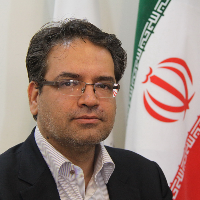Designing a holistic framework in studying urban segregation
Abstract:
Urban segregation as an undeniable urban reality is a multidimensional and multi-faceted phenomenon, which occurs in space and time. This phenomenon is determined not just by fragmented spaces or socio-economic differentiation but also by interaction of all dimensions (spatial, social and economic) and their differentiations. Despite these varieties, there is no holistic approach to studying and dealing with this phenomenon. Although segregation has been regarded as a social issue, little attention has been paid to space and spatial structure of the city as effective factors in formation and development of urban segregation. Therefore, in anti-segregation practices, there are no hybrid analytical methods of spatial and socio-economic aspects.In this paper, the research method is theory development trajectory which is based on literature review and its aim is to develop and complete the existing theory. Thus, the concept of urban segregation is developed as a precise and comprehensive exponent of reality with a high degree of predictability in implementation. In the process of conceptual development, urban segregation - based on its spatial connotation - is introduced as a spatial and socio-economic phenomenon. The designed conceptual model depending on the contribution of the aspects of urban segregation manifestation includes four parts: areas with Spatial Segregation (absolute segregation), areas with Involuntary Segregation (absolute segregation), areas with Socio-economic segregation and areas without segregation (integrated areas).For testing the model, neighborhood areas of Isfahan were studied and analyzed because nowadays, urban segregation is involved at urban quarter levels and becomes visible through the socio-spatial gaps. For clarifying the proposed model at the level of neighbourhood quarters, data gathered from analyzing effective dimensions on urban segregation was synthesized and the state of Isfahan quarters were determined based on the development ranking and average value of integration. Appraisal of 188 quarters and their place at the model presents high conformity of results with reality. Deteriorated urban areas and quarters such as Aligholi Agha, Zeinabieh, Vahid, Hemmat Abad, Marchin, Juibareh, Koujan, Baboukan, Shahshahan, Atsharan and Ghaemieh were placed at absolute segregation area (part (3) of the model) and affluent quarters such as Malek, Isfahan University distrct, Bagh e Negar (Ayeeneh Khaneh), Abshar, Saadat Abad, Hezar Jarib, Barazandeh and Sheikh e Eshragh which are in a good state in each dimension were placed in part (1) of the model showing areas without segregation (integrated areas). Therefore, in the test, most of the deteriorated urban areas and quarters were placed in absolute segregation area of the model and affluent quarters in the northern parts of the city were placed in areas without segregation (integrated areas).Therefore, the findings reveal the model efficiency in describing the situation and status of urban areas. Due to the placement of the quarters at each four parts of the model, different descriptions for their status were obtained. Thus, proposed priorities and actions for each urban quarter should be planned according to their placement in the model. It can be argued that this proposed holistic model can be used as an effective tool to support decision making regarding urban quarters and their level of segregation. The real and holistic image represented by this model acts as a base for defining priorities and types of necessary actions to establish balance and equality in the city.
Keywords:
Language:
Persian
Published:
Motaleate Shahri, Volume:5 Issue: 20, 2016
Pages:
79 to 91
https://magiran.com/p1736423
دانلود و مطالعه متن این مقاله با یکی از روشهای زیر امکان پذیر است:
اشتراک شخصی
با عضویت و پرداخت آنلاین حق اشتراک یکساله به مبلغ 1,390,000ريال میتوانید 70 عنوان مطلب دانلود کنید!
اشتراک سازمانی
به کتابخانه دانشگاه یا محل کار خود پیشنهاد کنید تا اشتراک سازمانی این پایگاه را برای دسترسی نامحدود همه کاربران به متن مطالب تهیه نمایند!
توجه!
- حق عضویت دریافتی صرف حمایت از نشریات عضو و نگهداری، تکمیل و توسعه مگیران میشود.
- پرداخت حق اشتراک و دانلود مقالات اجازه بازنشر آن در سایر رسانههای چاپی و دیجیتال را به کاربر نمیدهد.
In order to view content subscription is required
Personal subscription
Subscribe magiran.com for 70 € euros via PayPal and download 70 articles during a year.
Organization subscription
Please contact us to subscribe your university or library for unlimited access!



